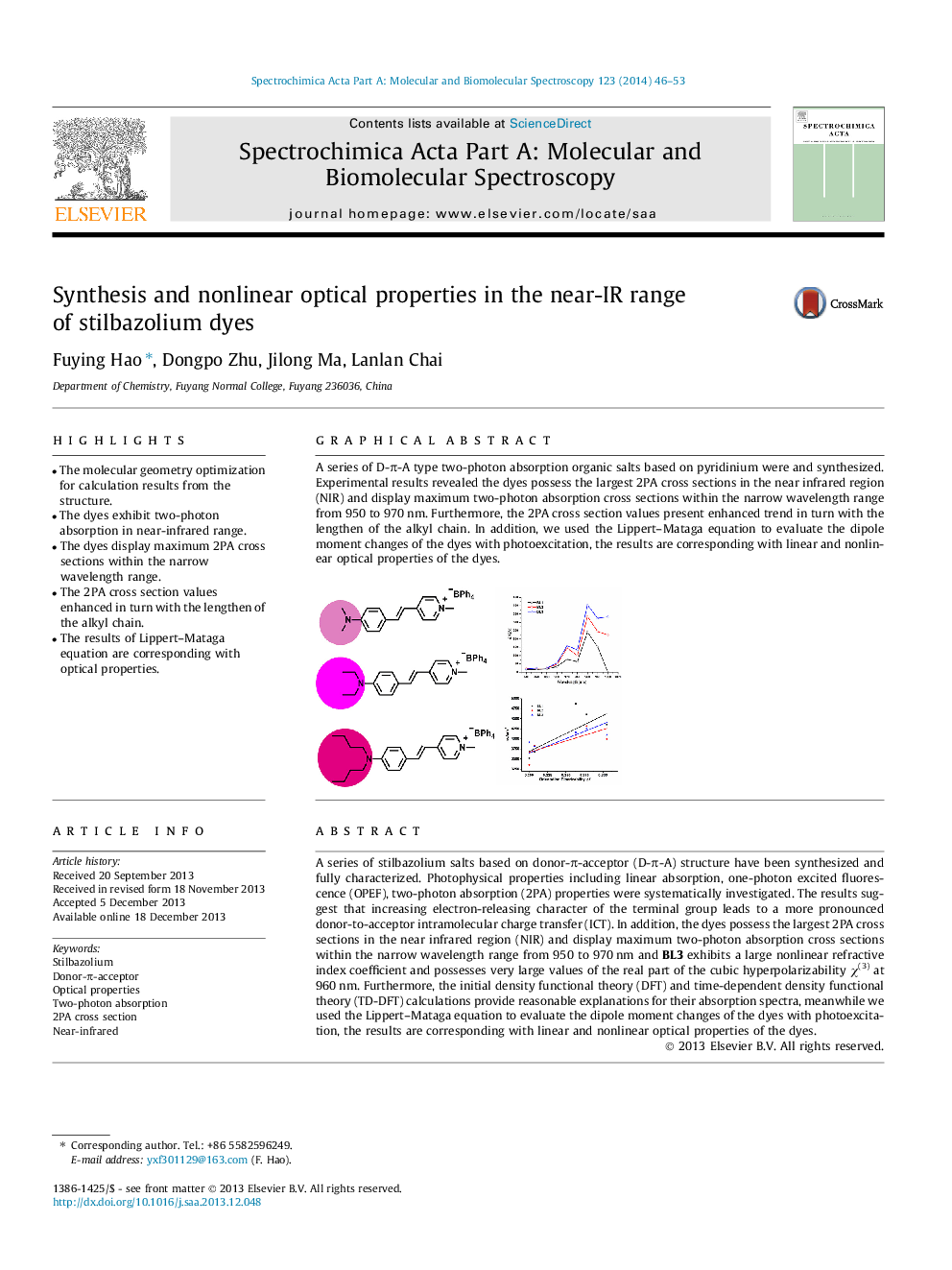| Article ID | Journal | Published Year | Pages | File Type |
|---|---|---|---|---|
| 1232818 | Spectrochimica Acta Part A: Molecular and Biomolecular Spectroscopy | 2014 | 8 Pages |
•The molecular geometry optimization for calculation results from the structure.•The dyes exhibit two-photon absorption in near-infrared range.•The dyes display maximum 2PA cross sections within the narrow wavelength range.•The 2PA cross section values enhanced in turn with the lengthen of the alkyl chain.•The results of Lippert–Mataga equation are corresponding with optical properties.
A series of stilbazolium salts based on donor-π-acceptor (D-π-A) structure have been synthesized and fully characterized. Photophysical properties including linear absorption, one-photon excited fluorescence (OPEF), two-photon absorption (2PA) properties were systematically investigated. The results suggest that increasing electron-releasing character of the terminal group leads to a more pronounced donor-to-acceptor intramolecular charge transfer (ICT). In addition, the dyes possess the largest 2PA cross sections in the near infrared region (NIR) and display maximum two-photon absorption cross sections within the narrow wavelength range from 950 to 970 nm and BL3 exhibits a large nonlinear refractive index coefficient and possesses very large values of the real part of the cubic hyperpolarizability χ(3) at 960 nm. Furthermore, the initial density functional theory (DFT) and time-dependent density functional theory (TD-DFT) calculations provide reasonable explanations for their absorption spectra, meanwhile we used the Lippert–Mataga equation to evaluate the dipole moment changes of the dyes with photoexcitation, the results are corresponding with linear and nonlinear optical properties of the dyes.
Graphical abstractA series of D-π-A type two-photon absorption organic salts based on pyridinium were and synthesized. Experimental results revealed the dyes possess the largest 2PA cross sections in the near infrared region (NIR) and display maximum two-photon absorption cross sections within the narrow wavelength range from 950 to 970 nm. Furthermore, the 2PA cross section values present enhanced trend in turn with the lengthen of the alkyl chain. In addition, we used the Lippert–Mataga equation to evaluate the dipole moment changes of the dyes with photoexcitation, the results are corresponding with linear and nonlinear optical properties of the dyes.Figure optionsDownload full-size imageDownload as PowerPoint slide
